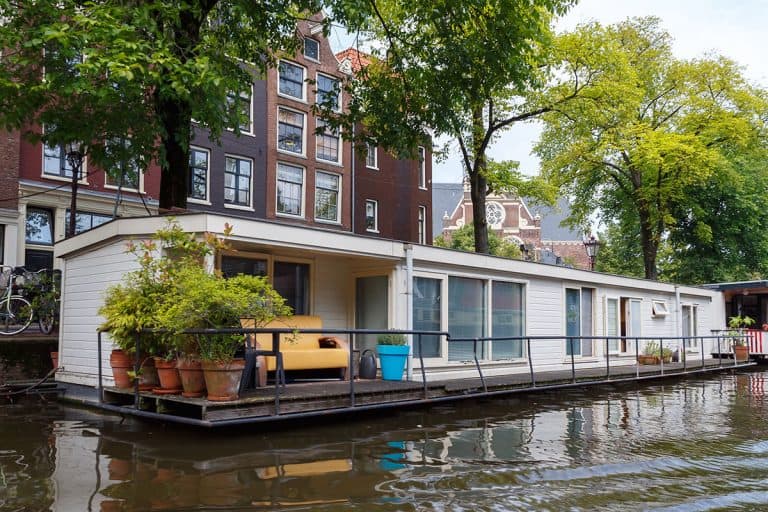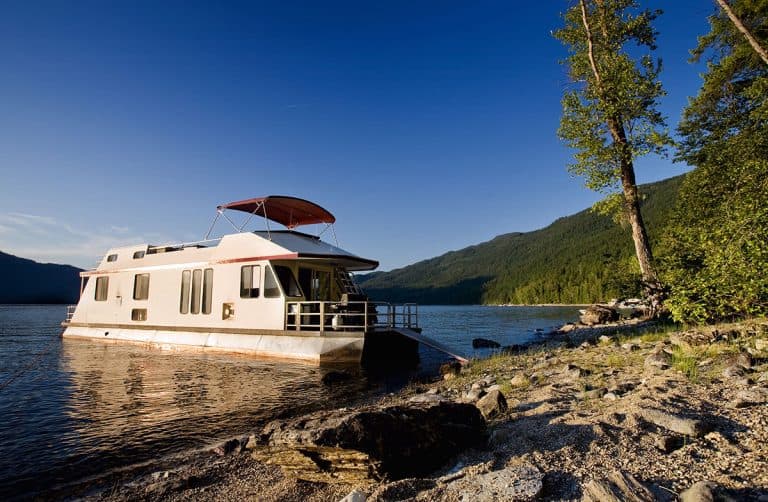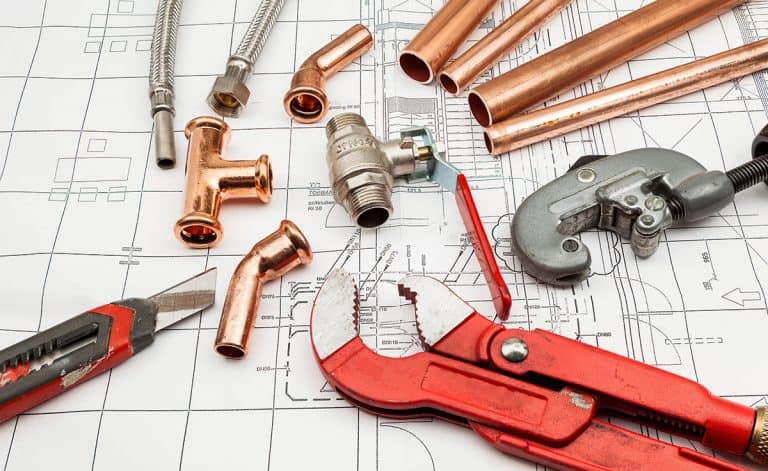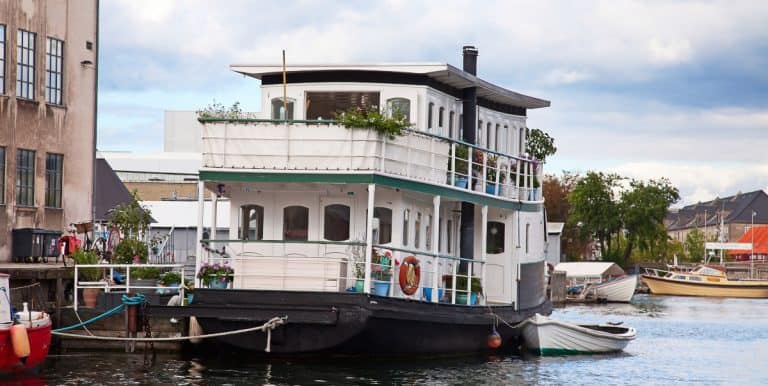How to Buy a Houseboat: 6 Steps and Tips
For many free-spirited adults, purchasing a houseboat is a great way to step out of conventional living. It’s a great way to stay near the waters, and for anyone with a love to travel, owning a houseboat makes going on adventures even more unforgettable. Houseboat communities are also known to be highly friendly to one another, so you’ll never know where or when you’ll make great friends along the way.
To buy a houseboat you will need to decide if you’re keen to own a stationary houseboat or a floating home to sail the waters. Once you’ve done so, be sure to plan around your available budget – even if you’re looking to secure a loan. After running your houseboat through its mandatory haul inspections, you’ll be well on your way to calling the houseboat your own.
Read on for more details on what you need to do when buying your first floating home.
6 Steps to Buying a Houseboat
Now that you’ve set your mind to own a houseboat let’s walk through the 6 steps to buying a houseboat.
1. Decide on the Kind of Houseboat You Want
There are a variety of houseboats to suit different lifestyles, and the key to selecting the right unit for you is to figure out what you’d like to do with your houseboat.
Many houseboat owners enjoy the thought of living in a stationary houseboat and this is ideal if you’re not looking to sail the waters for new adventures. If you’re keen to travel in a houseboat, a yacht or barge style boat that is made of wood may be the better choice.
For inspiration, here is our list of best Liveaboard Boats Under 50 Feet.
2. Plan Your Budget
The next step is to plan your budget as a houseboat owner. Depending on the type, size, and make of your future home, prices will often be between $125,000 to $250,000 for a new unit.
Of course, you could also look at cheaper, used houseboats, but do beware of the need for renovation and repairs, which may rack up on the total price of your houseboat.
Aside from the initial payment to purchase a houseboat, it may also be a good idea to draw up a budget plan for the maintenance of your houseboat.
To play it safe, I recommend you budget 5% to 10% of your houseboat’s price to have an estimate of how much you’ll have to fork out in a year to retain your houseboat. This should help pay for the extra fees, including insurance, dockage fees, and running maintenance needs.
If you’re planning to live on your houseboat on a full-time basis, be sure to check in with the IRS to see if you qualify for a tax deduction on your loan interest. This can be done just as brick and mortar homeowners do on their mortgage interests.
3. Secure a Houseboat Loan
While living debt-free might be your long-term priority, most people have to finance their homes (including houseboats) in part or entirely.
Depending on your houseboat type, you could look at securing a loan to finance your unit. For instance, houseboats that aren’t usually stationary may qualify for an RV loan, while stationary houseboats may give you a floating-home loan.
Unlike regular home loans, houseboat loans may require a 20% to 35% down payment for a 20-year or 30-year amortization. You may also be required to have a minimum FICO credit score of 680 to qualify for a houseboat loan.
Note that interest rates for houseboat loans are also typically higher than those of regular homes, which means you might wish to pay off the loan earlier to save on those interest rates.
4. Decide Where You’ll Dock Your Houseboat
Just as you’ll have to decide where to build your home, you’ll also have to decide where to dock your houseboat. For first-time houseboat owners, I recommend that you get to know the houseboat community in your area, so you can get tips on where to moor your unit.
While some piers are open for all houseboats to dock, most places require you to pay a marina rental fee or be a part of an association. Either way, researching this should be a part of your houseboat purchasing journey and is an important step that shouldn’t be overlooked.
5. Speak to the Authorities for an Inspection
Before a houseboat purchase can be finalized, a mandatory vessel inspection must be done by a marina surveyor. As a buyer, this is an inspection you’ll have to pay for, and you must lift the houseboat out of the water.
This all-round inspection would include an inspection on the hull of your houseboat, an interior walkabout, and a look at your loan and insurance company. By the end of the inspection, the marina surveyor would be able to determine the value of your houseboat.
While you can always seek a third-party marina surveyor, some financial companies may require the use of their pre-approved surveyors. In this case, it’s always best to refer to the rules set by your loan company to ensure a stress-free hull inspection.
6. Finalizing Your Purchase
After you’ve completed all the mandatory steps in buying a houseboat, you’ll be ready to finalize your purchase and sign off all necessary documentation.
If you’re wary about missing out on any steps, it may be a good idea to engage a trustworthy realtor who can assist you from the beginning of your purchase journey. Remember that committing to a houseboat is a big step to take, so you’ll want to take it slow when finalizing your purchase.
The Pros and Cons of Buying a Houseboat
To help decide if buying a houseboat is right for you, here is a comparison of the pros and cons of buying a houseboat.
Pros
- It makes traveling easier: Like owning an RV, houseboats allow you to travel whenever or wherever the water takes you. While you may require proper documentation to travel into international waters, the experience of living in a houseboat will make for unforgettable travels while saving you money on separate accommodations.
- Possible tax breaks and no property taxes: Unlike landed homes, property taxes are usually not applicable to houseboats. Instead, you may potentially qualify for houseboat tax breaks and deductions on your loan interest. Be sure to check in with the IRS rules if you wish to apply for these deductions.
Cons
- High maintenance: Unfortunately, one of the biggest cons to owning a houseboat is the cost of maintenance that may incur. This is especially true for non-stationary houseboats, as engine and other mechanical failures are often expensive to fix.
- Miscellaneous fees and other expenditures: Taking docking or marina costs into account, it may be expensive to retain a houseboat. Subsequently, you may also have to pay for other expenditures such as fuel costs and sewage pumping fees regularly, making houseboat upkeeping a costly situation.
Conclusion
As you can see, it isn’t a difficult task to secure a houseboat of your own if you wish to live on the waters. With proper budgeting, inspection, and documentation, you may well be on your way into the seas with your houseboat.
Before you move on, however, you’ll want to be sure that your houseboat has received all legal documentations – whether from your loan or insurance company so you can enjoy your new way of living.
Remember that certain states may have separate regulations and rules when it comes to traveling and docking your houseboat, so be sure to check-in with the relevant authorities before you commit.






